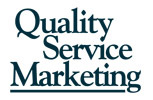One of my favorite vacation spots is a sprawling castle that sits amid thousands of acres of beautiful land nestled in upstate New York. Mohonk Mountain House is a family owned resort facility that was founded in 1869 by Albert Smiley and is recognized as a National Historic Landmark. In its fourth generation of family leadership, Mohonk maintains “19th century charm” while offering 21st century amenities (including a fabulous spa). Mohonk provides its guests with exceptional service and hospitality and has received numerous industry accolades, including recognition by Conde Nast Traveler’s Readers’ Choice Awards and Travel + Leisure’s World’s Best Awards.
My husband and I have enjoyed visiting Mohonk as returning guests for several years now, and we continue to be impressed with the its commitment to service excellence and hospitality. After our last visit, I contacted Jacquelyn Appeldorn, Mohonk Mountain House General Manager, and she graciously agreed to a blog interview. Jackie has served in this position for 11 years and oversees a staff of up to 750 full-time and part-time employees. (The total number of employees fluctuates seasonally in this year round operation.)
Part 1 of this interview provides insight into Mohonk’s service culture and how the organization engages employees in maintaining this culture. Part 2 will feature a special follow up.
QSM: Jackie, please tell us a little bit about your background and how you came to be at Mohonk Mountain House (MMH).

Jackie: I’ve had two tenures at MMH. While I was in college, I started working in the Mohonk Mountain House dining room for what I then expected would be a summer job. I worked there for a few summers while in college, and then stayed for another 15 years, as I progressed through the organization. I was a vice president when I left to take a position on the faculty in the business department of a nearby community college (teaching had long been my career aspiration), where I remained for 9 years. During this time, I joined the Board of Directors at Mohonk, and then was offered the General Manager position. Although I enjoyed college teaching, the offer represented a unique opportunity, and I still am honored to be here.
QSM: Mohonk has been serving guests for more than 140 years. How do you apply this tradition of service in current times?
Jackie: We have a long tradition of serving guests. When we were designing our Service Program in 2003, we determined we needed to create a Service Statement: a brief but inclusive message that all employees could recite and understand that accurately articulated our vision of service at Mohonk; almost a mission statement for our service program. We spent many hours struggling over what it should say and really needed and wanted it to be perfect.
One day, our archivist presented our Executive Group with a document dated June 19, 1916, and signed AK Smiley (the nephew of the first AK Smiley who founded the resort in 1869). At the top was the phrase “MEMORANDUM IN EFFECT UNTIL FUTHER NOTICE …” In the body of the memo, we found our Service Statement: “The cardinal aim of our business is the comfort and contentment of guests.” Mr. Smiley’s memo provided a blue print for the right way for employees to behave in the workplace and to treat guests, which is just what we intended our Service Program to do. The behaviors addressed in his memo are some of the same behaviors our program addresses almost 90 years later.
QSM: The hospitality industry employs people around the clock. What are the key challenges of engaging staff in a 24/7 operation? And how do you prepare to meet these challenges?
Jackie: The biggest challenge in this regard is communication. I feel all of us spend so much of our time in meetings, and we still don’t convey everything we want our staff to know – and what they want to know — on a timely basis. One element of our Service Program was the introduction of Daily Shift Briefings, a brief activity intended to take place at the start of every employee’s work shift that provides key information about that day’s events, activities to reinforce specific service practices (we have 14 Service Steps and 3 Service Standards) and trivia about Mohonk history.
As our Service Program evolved, we added a quarterly employee publication called Mohonk Bits (initiated and produced by non-managerial employees) and a weekly cafeteria tabletop flyer, known as Tidbits. These publications do more than relay information; they emphasize our traditions and service commitment, highlight successes (individual and organizational), convey historical anecdotes (as a 142- year-old family-owned business, history is important to us) and reinforce our pride in what all of us do at Mohonk.
QSM: Tell us more your Service Program and Service Committee: why it was formed … its purpose … who is involved … what are some typical activities … and its overall impact.
Jackie: Mohonk’s Service Program was the result of a well-planned, thoughtfully considered, comprehensive initiative to change the culture that existed at that time to one that values and exhibits a high standard of service to guests as well as co-workers. Developing and launching the plan took about two years and involved many employees throughout the organization. Once the program was launched, a newly created Service Committee took on organizational responsibility for maintaining and nurturing the service culture.
We all recognize our individual roles in perpetuating our service culture, but this committee is charged with developing and executing activities on a regular basis that provide on-going, consistent reinforcement of good service behavior. Our Training Manager, who works in the HR department, now chairs the committee. Most departments have a representative who volunteered or may have been invited by other committee members to join. Members can rotate off, which exposes a greater number of employees to the function of the committee. The committee is composed of supervisory or management staff, although not senior management, and the occasional hourly employee.
Members meet weekly and plan monthly programs, holiday events, and on-going activities. For example, they create two annual all-employee events. The one in November has evolved into The Parlor Games; past themes have been Jeopardy, professional wrestling, and the Dating Game. These games feature contests involving volunteers and members of the audience that reinforce our Service Steps and Standards. Every May, the committee produces the annual Albert Awards, the Mohonk version of the Oscars, where individual employees receive awards (an Albert statue, cash and prizes) for Best Performance in each of our 14 Service Steps. We award two for each category – one to “front of the house” employees, those that regularly deal with guests; and one to back-of-the-house employees, who work behind the scenes and are more apt to serve co-workers. We run each of these events once in the morning and again in the afternoon to allow employees working both shifts to attend. These two annual events are elaborate productions, much enjoyed and anticipated by the staff.
An example of a monthly service program is Cash Cab. This program reinforces the service step of “Escort Guests to their Destination.” Throughout the month, a member of the Service Committee drives around picking up employees in the parking lot to drive them to the entrance. (The parking lots are a long downhill walk from the entrance.) On the trip, employees have a chance to win prizes by answering questions about Mohonk (reinforcing the Service Step “Be Knowledgeable About House History.”)
Another popular monthly program is when management staff replaces the cafeteria servers at meals. An additional ongoing activity is the awarding of “Summerhouse Tickets” (Mohonk’s logo is a summerhouse). Managers receive tickets each month to award to employees they catch in the act of providing good service. Ticket recipients are entered into a monthly raffle for prizes.
We have 15 people on the Service Committee who perform their regular jobs in addition to the work they do for the Service Committee (unlike academia, we don’t offer release time for work outside of one’s job description). The committee and the individual members are highly regarded. We are very, very fortunate to have such creative, motivated, dedicated and hardworking staff members who are eager to serve on the committee. The programs and activities that they develop, and that we as a company support, do much to create an energized, positive work atmosphere.
QSM: Impressive! Thanks, Jackie, for sharing how Mohonk engages employees in reinforcing its culture of guest service. We look forward to learning more.
Note: Stayed tuned for Part 2 of this interview in which Jackie shares an employee story of service recovery.







